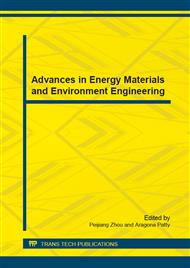p.690
p.694
p.701
p.705
p.711
p.715
p.723
p.727
p.734
Effects of Nutrient Enrichment on a Realistic Food Web
Abstract:
Nutrients supplies play a crucial role in population distribution of food webs, and it is one of the most important challenges in both theoretical and applied ecology to better understand the ‘bottom-up’ effect. Here we analyzed a realistic food web containing one limiting nutrient and two producer-consumer interactions. Through the simulations of the mean population size and the variability of each species, we found that 1) in infertile environment the coexistence of species increases with nutrient supply; 2) the mean values of species abundance increase dramatically at then remain constant with the increase of nutrient supply; and 3) the stability of each population also increases and then remains constant. These results are inconsistent with the traditional predictions known as the ‘paradox of enrichment’, and our analysis may provide a solution to this paradox.
Info:
Periodical:
Pages:
711-714
Citation:
Online since:
December 2014
Authors:
Keywords:
Price:
Сopyright:
© 2015 Trans Tech Publications Ltd. All Rights Reserved
Share:
Citation:


